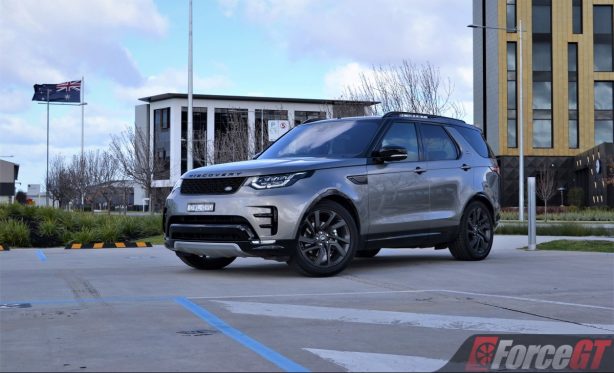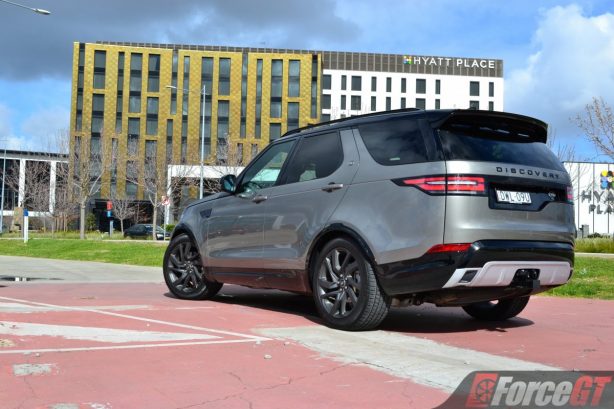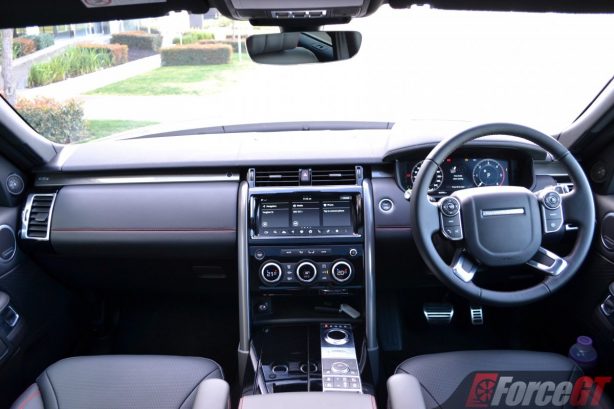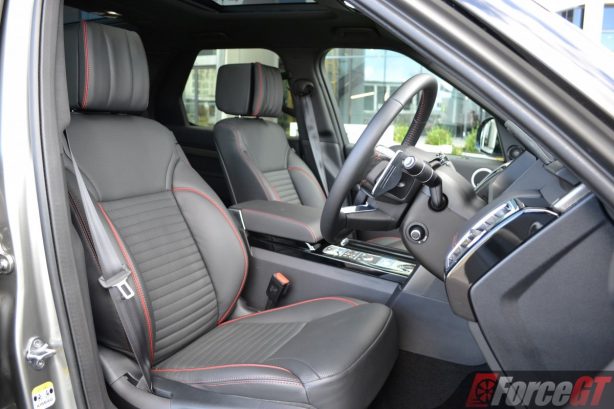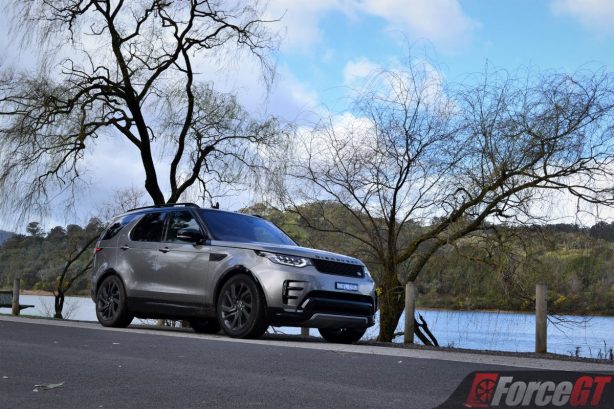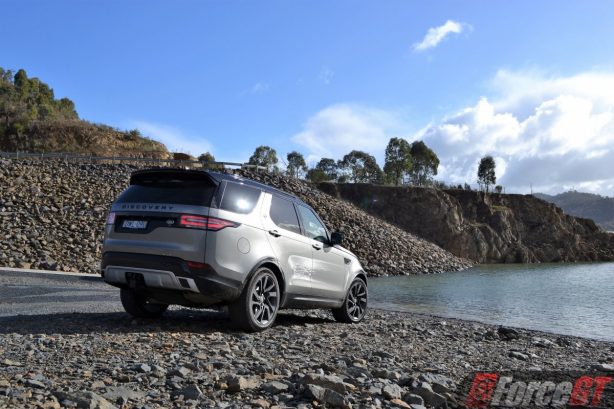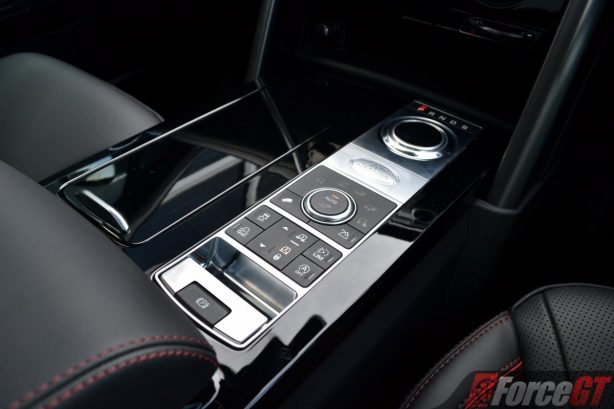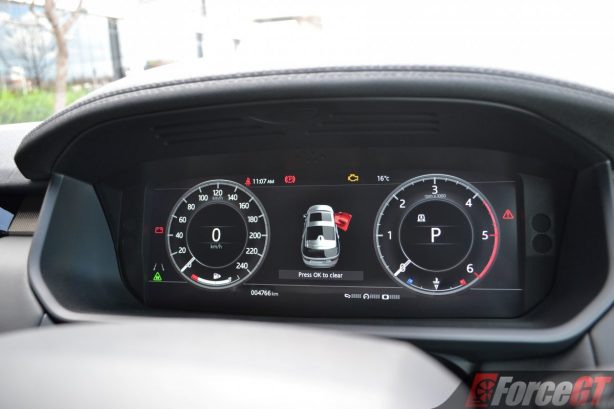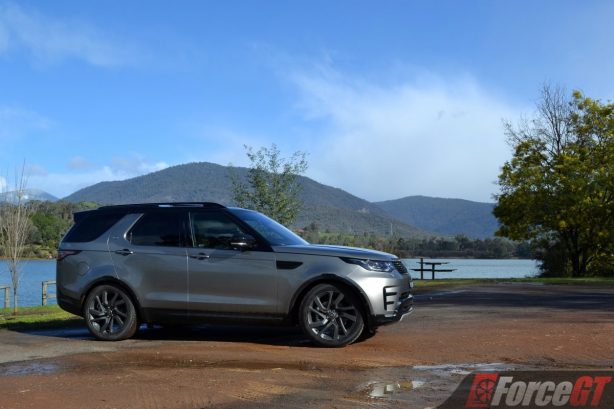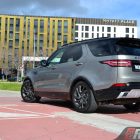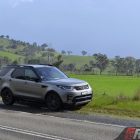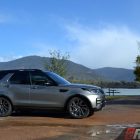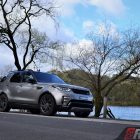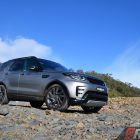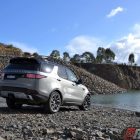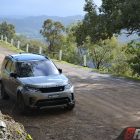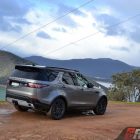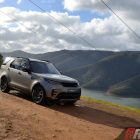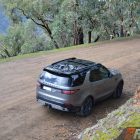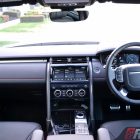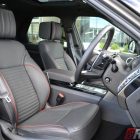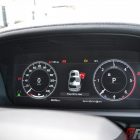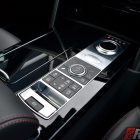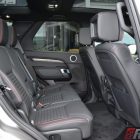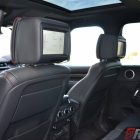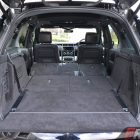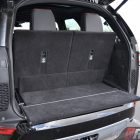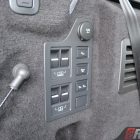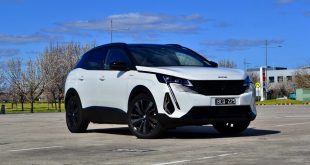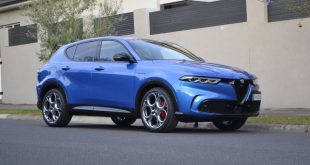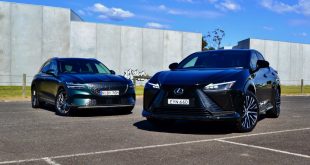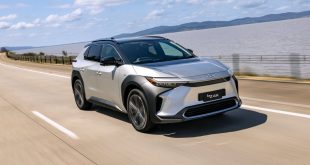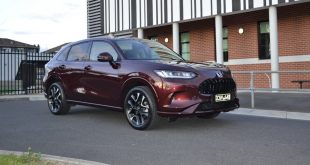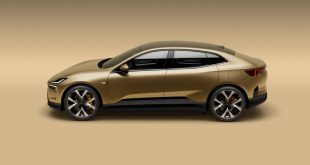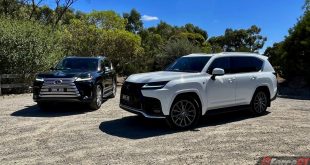When it comes to iconic off-roaders, three names quickly pop up – Jeep Wrangler, Toyota LandCruiser and Land Rover Discovery. While all three will get you in and out of the bush in one piece, only one will get you around town in style, more so in its more recent generations.
The Discovery – or simply Disco as it’s more commonly called these days – has been around since 1989 as the ‘middle child’ between the softer Freelander (now Discovery Sport) and the much more expensive Range Rover in Land Rover’s former three-prong sales strategy.
It was the brand’s pillar model, one that carried the company through tough times when both its smaller and larger siblings were struggling for sales.
Fast track to 2018, the Discovery is now in its fifth generation. And rather than being just a ‘bridging’ model specked in the middle of the line-up, the Disco is now a full-fledge model on its own, with no fewer than 10 variants on offer.
It’s also by far, the most opulent and upmarket Discovery ever, with pricing for a fully optioned up TD6 HSE Luxury range topper sitting uncomfortably close to a $200k entry-level Range Rover. But forgo some shiny bits and luxuries – poverty pack in car speak – a TD4 S base model can be had from just under $75k.
We were given the keys to the second-from-the-top SD4 HSE Luxury which, with a base price of $107,350 plus on-roads, isn’t too outrageous, but ours have been optioned up to the brim (more on that later) bringing the final figure to an exorbitant $152,600 plus ORCs.
Design and Comfort
Some may find the looks a little tough to digest at first, we don’t blame them because the bulky rear does seem a little out of proportion, but it’s a design that will grow on you. And when spec’ed properly like our tester – large wheels, gloss black accent and premium paint – the Disco is even capable of turning a few heads. It no doubt looks expensive and commanding, in a very unpretentious, un-Toorak tractor kind of way.
Underpinned by the new lightweight aluminium structure that debuted on the current Range Rover, the new Discovery sheds up to 480kg over the old model. Combined with a less boxy design, softer edges and more sculpted body panels, the new version yields improved aerodynamic which helps ensure better fuel efficiency and reduced wind noise.
Unlike the exterior, the interior retains a lot of the nameplate’s classic design cues. Stepping into the classy cabin is a sense of occasion for it is a major step up from before in terms of quality and premium ambiance, with top shelve materials used throughout. There is delicate leather for the seats, steering wheel and door cards, while the headliner is finished in soft black suede called Ebony Morzine. The centre console is covered in high gloss piano black trim which looks fantastic if not a little vulnerable to finger prints and scratches.
The cabin is truly a nice place to be, whether it’s for cruising around town or eating up the miles in a long drive. The seats are comfortable and offer plenty of adjustments to suit any body sizes, while the ergonomics are well thought out with everything within easy reach, despite the sheer width of the dashboard and centre console. We particularly like the seat heater/ventilation controls which are cleverly integrated into the temperature rotary knobs – twist to adjust temperate, press and twist to activate seat heating/cooling.
Speaking of HVAC, there are air con vents for not just the second row seats but also the optional third row. Each row also gets their own dedicated reading lamps and a pair of USB ports (total of 6 USB ports).
Not surprising for such a large cabin, each and every occupant gets to enjoy generous head and legroom, and this includes those seated in the third row. Where the rear pews in most 7-seat SUVs are only good for kids, the ones in the Discovery are genuinely adult friendly, if they are not unusually tall. With the large rear windows, there’s really a sense of space in the back, more so if a panoramic rear sunroof is fitted.
Our test car has been fitted with powered seats, which means you can stow the second and third row seats by just pressing some buttons. However, getting in and out of the third row can still be a bit tricky due to the tight passage and the soaring height of the vehicle itself.
From the driver’s seat, the sitting position is spot on, with a commanding view over the bonnet. The optional digital instrumentation display fitted to our test car replaces conventional gauges with a full LCD that dispenses high clarity graphics and allows a degree of customisation. It’s a cool thing but the sat-nav map failed to load several times during test, pointing to a bug in the system that needs to be ironed out.
It’s pleasant to see that the head-up display now works behind polarized glasses, unlike before. It’s also much brighter and clearer without the tendency of it washing out under bright daylight.
Boot space is enormous. With the second-row seating in place, there’s already 1231 litres available. Fold all three rows and that capacity doubles up to 2400 litres – you can easily fit a double mattress in there if you’re not too keen on towing a caravan in next camping trip.
Performance and Handling
The diesel only range is powered by a choice of 2.0-litre turbo-diesel four-cylinder and 3.0-litre turbo-diesel six-cylinder engines. Power from the 2.0-litre range from 132kW/430Nm in the TD4 to 177kW/500Nm in the SD4, while the 3.0-litre V6 pumps out 190kW/600Nm. All variants are mated with an eight-speed automatic transmission and all-wheel drive system.
Our test car gets the higher output 2.0-litre engine, which with just 177kW may not seem like enough for a 2.2 tonne SUV, but that strong 500Nm of torque is available from just 1500rpm, giving the car plenty of shove on the road even under a full load. There is the initial turbo lag as you dip in the pedal, but once the twin blowers spool up you do get up to speed relatively quickly thanks to that meaty mid-range punch.
The engine is generally refined but the clatter that accompanies any hard acceleration will leave no confusion as to what’s fueling it. It’s a typical trait for any four-pot diesel so if you want your oiler to be a bit more creamy then the smoother V6 might be the better pick.
The smooth shifting ZF 8-speed auto matches very well with the powertrain, picking the right gear all the time regardless of the driving condition.
The Disco is a massive vehicle but the new lightweight chassis with extensive aluminium content makes the car feel smaller than it actually is to drive. Turn in is much sharper than ever before and while there’s no escaping the body roll – it’s a tall vehicle after all – handling around the bends is neat and very well controlled. The lighter and smaller aluminium intensive four-cylinder engine also plays a large part in aiding weight balance by lightening the nose of the car, further contributing to sharper dynamics.
Out in the open road, the Disco is just sublime. This thing makes for a superb long distance cruiser as the ride is ultra comfortable and plush. The way it impresses in the bends, around town and in the country is a testament to its near perfect suspension and chassis tuning.
Being a Land Rover, the Discovery’s off road running gears are superb and our top-spec HSE grade comes with the full set of bush bashing toys. Equipped with Terrain Response 2, there’s the fully lockable center diff and rear diff, low range transfer box, height adjustment, and a myriad of off road modes to suit the underlying terrain. This thing will take on the roughest of off road tracks with ease and you will never have to step out of the vehicle once thanks to the countless cameras and sensors that give you a good view of what’s around the car direct from the touchscreen display. From the same display you also get to see what the oily bits underneath are doing, such as the degree of lock in each differential, wheel articulation and torque distribution to each wheel.
Towing capacity is rated at 3500kg, but this thing doesn’t just tow, it also takes the stress out of towing with an optional feature called Advanced Tow Assist. The system is essentially a clever piece of semi-autonomous technology used for backing a trailer, horsebox or caravan into position. With the touchscreen display showing the road behind, all you need to do is regulate the vehicle speed with the brakes and use the Terrain Response 2 dial on the central console to guide the trailer into the desired parking spot, while the car takes care of all the steering for you. The intuitive system will even alert the driver if the steering input requested is too severe and would cause a jackknife situation.
Quality
Land Rover’s build quality has improved tremendously over the years and is very much apparent in the Discovery. Fit and finish is tight throughout and despite the focus on luxury everything from the door handle to the switchgear still feels robust enough to handle the harsh treatment of off road driving.
It is, however, still not clear of electrical gremlins as evident by the aforementioned software bug with the map display in the digital instrumentation.
Economy
At the end of our week-long test with over 800km of mixed real-world driving clocked, the Disco’s SD4 2.0-litre turbo-diesel returned a combined average of 8.6L/100km, according to the trip computer. It’s a very respectable figure for a full size 7-seater SUV, though it’s a far cry from Land Rover’s seemingly optimistic claim of 6.5L/100km.
Freeway fuel economy, which hovers around just 5L/100km on test, is also impressive. With a massive 77-litre fuel tank, the SUV has an approximate cruising range of 1200km before needing a pit stop.
Equipment and Features
Our SD4 HSE Luxury comes well equipped even before options are added. Standard features include air suspension, twin-speed transfer box, LED headlights with signature daytime running lights, automatic high beam, keyless entry, powered tailgate and sliding front sunroof and fixed rear panoramic roof.
On the inside, there are 16-way electric memory front seats with heating and cooling, powered steering column adjustment, configurable interior mood lighting, three-zone climate control, 10-inch infotainment display with navigation and digital TV, as well as a punchy 825W Meridian Surround Sound System.
On the safety front, Lane Departure Warning, Terrain Response, Hill Descent Control, Autonomous Emergency Braking, parking sensors and rear view camera are all standard.
With such a comprehensive list of standard equipment, yet there are options available and the list is just as long and the prices are no less-eye watering. Amongst the many options fitted to the test car are Dynamic Pack 1 styling package ($5,450), 7 seats (3,470), Remote Intelligent Seat Fold Pack ($4,900), Drive Pro Pack ($4,900) and 8-inch rear seat entertainment ($5,270).
It’s worth noting that there are a few annoyances with some of the Disco’s features. First up is the auto high beam, which doesn’t work very well and often misinterprets road sign reflections as oncoming traffic. During a night drive through country B roads it was toggling so badly that we had to turn it off. Second is the 360 degree view camera, which cannot be activated alongside the reverse view camera, even though the screen size is large enough to fit both views.
Verdict
Design & Comfort
Performance & Handling
Quality
Economy
Equipment & Features
OUR SCORE
4.2/5
+ Plus
- Vast and luxurious cabin
- Usable third row seats
- Strong diesel engine
- Decent fuel economy
- Impressive off-road prowess
– Minus
- Super expensive options
- Some electrical annoyances
- New styling not to everyone’s taste
Overall
There’s no denying the new Land Rover Discovery is now a more luxurious and stylish proposition compared to its predecessors, but beneath all the plushness you will still find the nameplate’s DNA intact. The new Disco is still the car we have come to know and love – a big family SUV with a spacious cabin, dependable drivetrain and highly capable go-anywhere off-road credentials.
2018 Land Rover Discovery SD4 HSE Luxury pricing and specification
| Pricing (Excluding on-road costs): | From $110,050 As tested: $152,600 Tested options: · Dynamic Pack 1 (Exterior & Interior) (inc. Gloss Black side vents, Gloss Black Door Mirror Caps, Gloss Black DISCOVERY Script, Titanium Mesh Trim Finisher, Ebony Morzine Headlining and Bright Metal Pedals) – $5,450 · 8” Rear Seat Entertainment – $5,270 · Remote Intelligent Seat Fold Pack (inc. Electrically reclining rear seats, Powered third row seats and Intelligent Seat Fold) – $4,900 · Drive Pro Pack (inc. Blind Spot Assist and Reverse Traffic Detection, Adaptive Cruise Control w/- Queue Assist, Driver Condition Monitor and Lane Keep Assist) – $4,900 · Premium Metallic Paint in Silicon Silver – $4,110 · 7 Seats – $3,470 · Capability Plus Pack (inc. All Terrain Progress Control (ATPC), Terrain Response 2 and Active Rear Locking Differential) – $3,270 · 21” 5 Split-Spoke ‘Style 5025’ Alloy Wheels w/- Satin Dark Grey Finish – $2,990 · Cold Climate Pack (inc. Heated Windscreen, Heated Washer Jets, Heated Front and Rear Seats, and Heated Steering Wheel) – $1,130 · Activity Key – $960 · Four-Zone Climate Control – $950 · Black Roof Rails – $940 · Privacy Glass – $890 · 360 degree Parking Aid – $850 · Advanced Tow Assist – $850 · Wade Sensing – $740 · Cabin Air Ionisation – $470 · Auto-dimming exterior mirrors – $410 |
| Warranty: | 3 years/100,000km |
| Warranty Customer Assistance: | 3 years Roadside |
| Country of Origin: | United Kingdom |
| Service Intervals: | 12 months/26,000km |
| Engine: | 2.0-litre twin-turbocharged diesel in-line 4-cylinder 177kW @ 4,000rpm, 500Nm @ 1,500rpm |
| Transmission: | 8-speed automatic with steering wheel paddles |
| Drivetrain: | Four-wheel drive |
| Power to Weight Ratio (W/kg): | 83.7 |
| 0-100km/h (seconds): | Claimed: 8.3 |
| Combined Fuel Consumption (L/100km): | Claimed: 6.4/Tested: 8.6 |
| Fuel Capacity (L): | 77 |
| RON Rating: | N/A |
| Body: | 5-door, 7-seat SUV |
| Safety: | · 5-star ANCAP · 6 airbags · ABS, ESC, TC, EBD, BA · Autonomous Emergency Braking (AEB) · Torque Vectoring · Hill Launch Assist · Cruise Control and Speed Limiter · Trailer Stability Assist · Lane Departure Warning · Front and rear Parking Aid · Rear View Camera · Auto-Dimming Heated Door Mirrors · Front and rear Fog Lights · Configurable Dynamics · ISOFIX · Full Size Spare Wheel |
| Dimensions (L/W/H/W-B) mm: | 4,970/2,073/1,888/2,923 |
| Turning Circle Between Kerbs: | 12.3 |
| Ground Clearance: | 213 |
| Wading Depth: | 900mm |
| Approach Angle: | 29° |
| Departure Angle: | 22.2° |
| Breakover Angle: | 27° |
| Tare Mass (kg): | 2,115 |
| Boot Space (min/max) (L): | 1,231/2,400 |
| Towing Capacity (kg): | Braked: 3,500/Unbraked: 750 |
| Entertainment: | · 10.2” touchscreen with satellite navigation · 825W Meridian Surround Sound System · Bluetooth · USB · AM/FM/DAB+ Digital Radio |
Competitors: Audi Q7, BMW X5, Lexus LX, Mercedes-Benz GLE, Porsche Cayenne, Volvo XC90
 ForceGT.com Car News, Car Reviews, Video Reviews, Tuning and much more.
ForceGT.com Car News, Car Reviews, Video Reviews, Tuning and much more. 